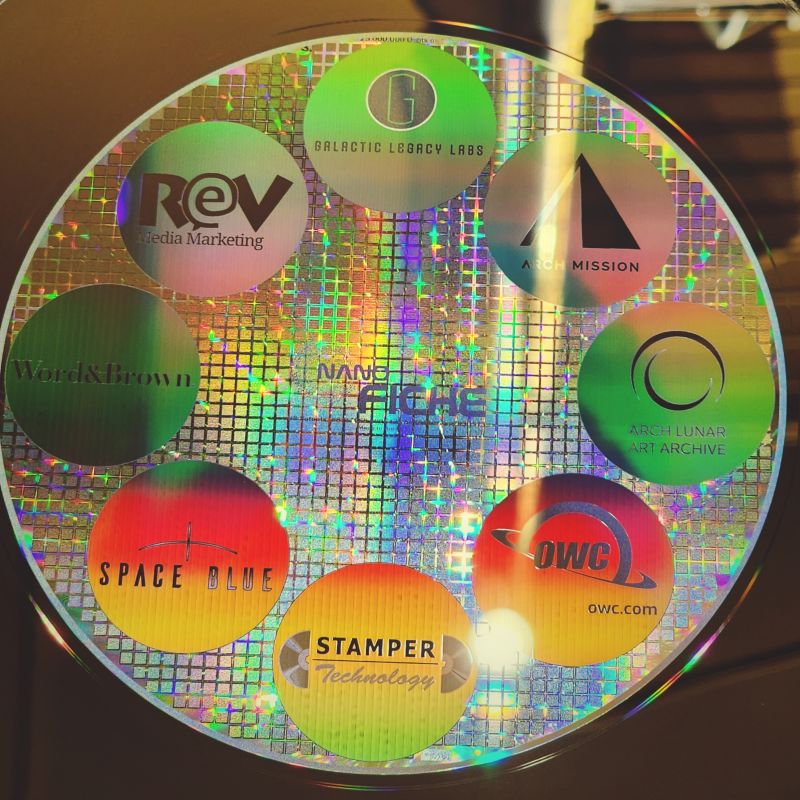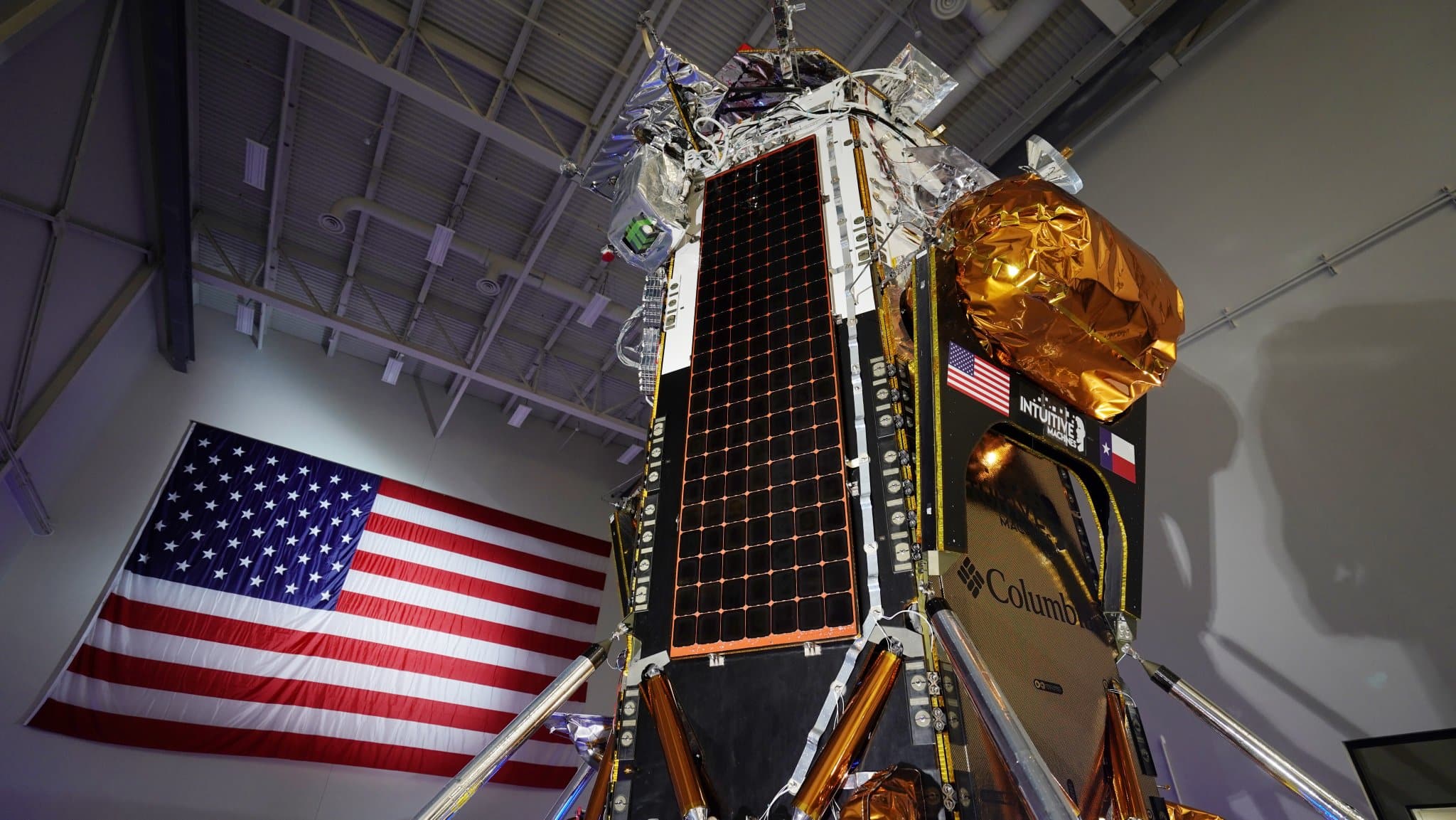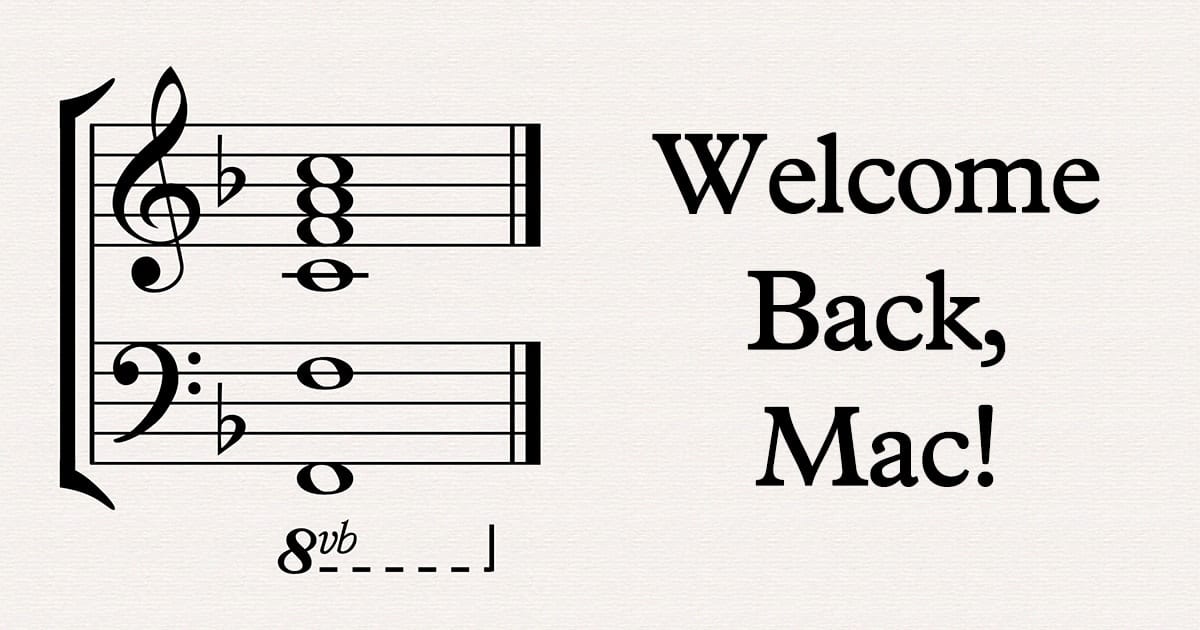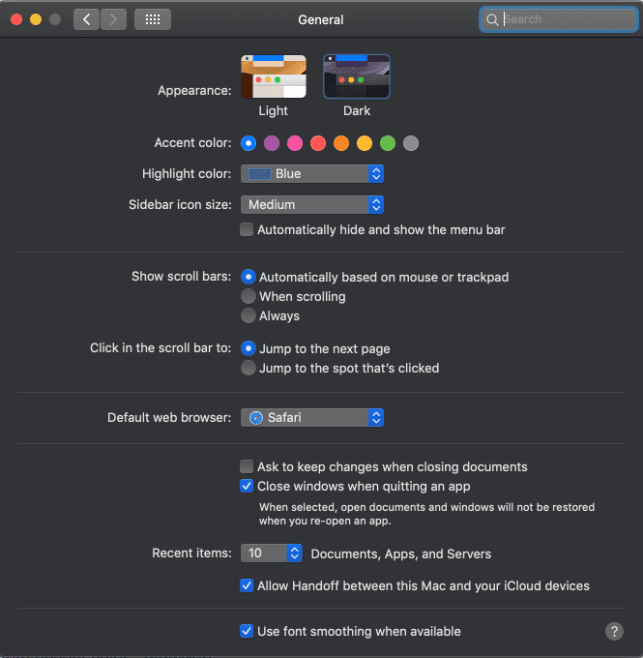UPDATE: The IM-1 Odysseus lander has entered lunar orbit. The latest plan is for the lunar craft to land on the moon around 5:30 p.m. EST on Feb. 22.

OWC is “one giant leap” closer to the moon.
Early this morning, a SpaceX Falcon 9 rocket successfully lifted off from Cape Canaveral, as part of Intuitive Machines Inc.’s IM-1 mission to the moon’s South Pole. High atop the Falcon 9 rocket was an unmanned Intuitive Machines Nova-C class lunar lander named Odysseus.
Odysseus is carrying several payloads—some of which belong to NASA and some of which are commercial payloads. Inside one of those commercial payloads is a special data storage disk made with help from the folks here at OWC.
You can watch the launch of IM-1 here (the launch happens at around 1:59:22):
Intuitive Machines is the space exploration, infrastructure and services company behind the IM-1 mission which represents the company’s first attempted lunar landing as part of NASA’s Commercial Lunar Payload Services (CLPS) initiative.

Made with support from OWC, the storage disk aboard Odysseus is a small 15-layer nickel stack microfiche time capsule made by space archival storage company NanoFiche in coordination with Galactic Legacy Labs subsidiary Lunaprise.
The disk contains much of humanity’s knowledge, songs, and messages from more than 1 million people called “Lunagrams.” It is designed to survive for millions of years on the lunar surface, preserving a record of human life on Earth. You can read more about the IM-1 mission here.

The IM-1 achieved a successful launch at around 1:05 a.m. EST on Feb. 15. Once the main and secondary engines detached, Odysseus was set free on its course toward the moon about an hour later. Odysseus now begins a week-long journey to the moon’s South Pole.
The Odysseus lander—and the OWC-supported Lunaprise time capsule—are slated to autonomously land on the moon on at around 5:30 p.m. EST on Feb. 22. Should the lander successfully make it to the moon’s surface it will represent the first U.S. moon landing since the Apollo program ended with the Apollo 17 mission in 1972.
Originally slated to launch in 2021, the successful launch of IM-1 followed years of setbacks and delays. The overall CLPS initiative IM-1 is part of will play a key role in NASA’s Artemis program and humanity’s return to the moon.
With plans to have human boots on lunar soil as early as next year, the payload sent as part of IM-1 will deliver important artifacts and scientific tools that will “lay the foundation for human missions and a sustainable human presence on the lunar surface,” according to Intuitive Machines.
Stay tuned to Rocket Yard for more updates on the exciting IM-1 mission to the moon!










I think it’s pretty big news that a private company has picked up (with hugely improved efficiencies) where NASA dropped the ball…